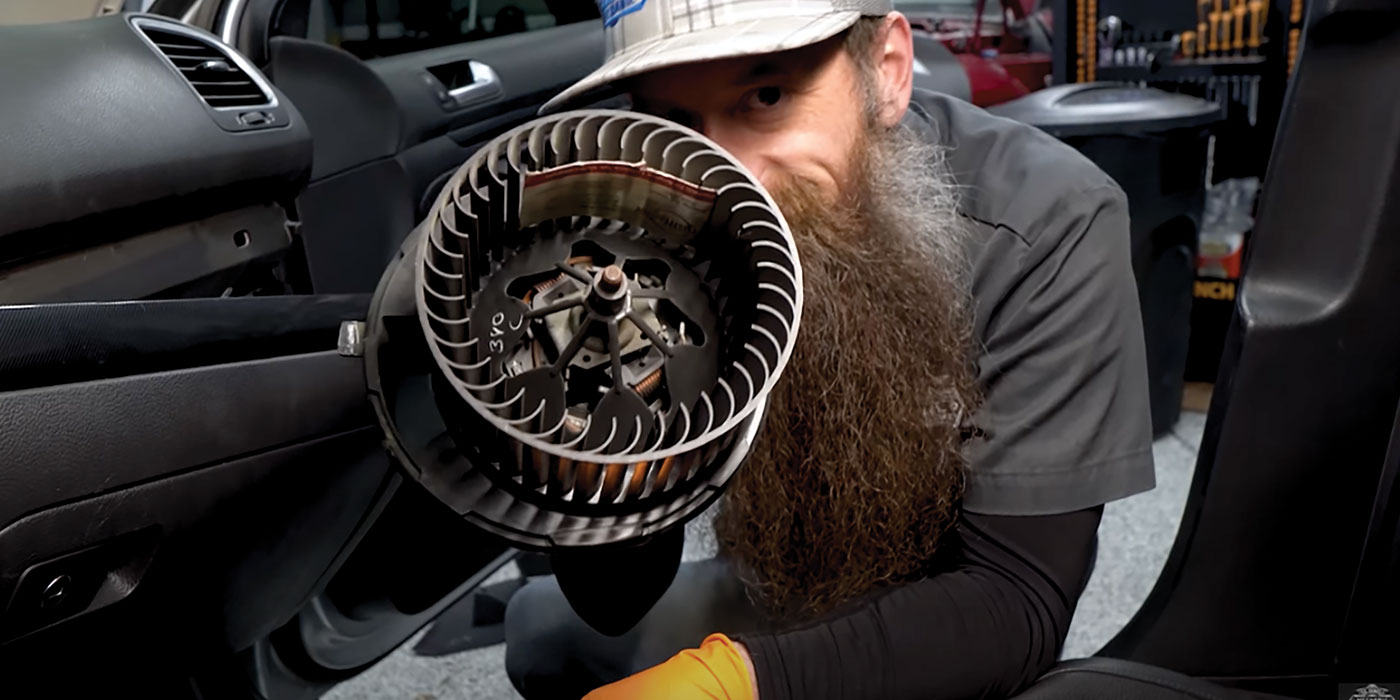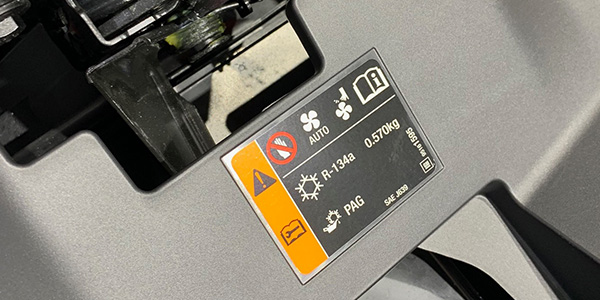He used to be known as the tune-up guy, the shop troubleshooter or the ace mechanic. Today, he’s known as a driveability tech. Tomorrow, when body control electronics come on full line, he’ll probably be known as an electronics diagnostics technician.
Whatever his name might be, most of us know that driveability techs are smart, sometimes contentious, and most often completely absorbed in what they do. In order to stay on top of their game, most spend their spare time studying the diagnostic process. Some are driven by ego, some by money. But none thrive on tedious tasks and the resulting boredom. As I’ve said before in this column, driveability diagnostics is a tight-wire act and the adrenalin rush of solving a difficult problem is, by itself, enough to keep most diagnostic techs coming back to work day after day. And maybe that’s why you want to become a driveability technician.
Mental Attitude
What’s the psychological make-up of a driveability technician? I think innate curiosity is the prerequisite characteristic of any good driveability tech. Curiosity is needed to master new technology. Curiosity helps sort and classify all of the detailed factual information a driveability tech must know. Without innate curiosity, you lose the driving force you need to become a good driveability technician.
The next characteristic is perseverance in solving problems. Since most driveability techs won’t admit failure, they usually work until a problem is solved. Moreover, they feel utterly defeated if the customer decides to get a second opinion. You might call it professional pride or you might call it vanity. But without it, you can’t succeed as a driveability tech.
Problem Solving
Educators use the terms “logical” and “critical thinking” to describe problem-solving traits. The logical part of problem solving is obvious, because we use logic in just about any of our day-to-day activities. But critical thinking refers to our ability to analyze, classify and utilize an often overwhelming array of facts in solving a problem. Some auto mechanics programs, for example, require students to take college algebra because the problem-solving techniques used in algebra closely resemble those used to diagnose vehicle electronics. If you’re intrigued by puzzles and games, you’re probably going to be good at driveability diagnostics.
How do you go about solving a problem? First of all, you accumulate as much factual data about the problem as you can. Of course, when you lack factual data, then you might develop a scenario that would explain some of the issues with which you’re dealing.
To illustrate, I recently had a ’99 Toyota 4Runner come in the shop with a P0171 trouble code indicating a lean air/fuel (A/F) mixture on cylinder bank one. The long-term fuel trim was +35%, which meant the PCM was adding fuel in an attempt to maintain the desired stoichiometric 14.7:1 A/F mixture. But, when I swiped my finger around the inside of the tail pipe, I collected a thick coating of soot, which indicated that the engine was actually running rich. When I opened the hood, I also discovered that the owner had a Toyota factory supercharger kit installed along with a reusable performance air filter element. The owner’s complaint was an illuminated MIL and poor fuel economy. Okay, now that we have a set of facts to start with, how do we go about solving a PCM with schizophrenic fuel control behavior?
Thinking Out of the Box
Most of us have seen the “out-of-the-box” puzzle in which we had to connect dots located within a box by drawing straight lines intersecting outside the box. Thus we have the term “thinking out of the box.”
Obviously, if all problems had a straight-line or cook-book solution, everybody could be a driveability technician. While an auto manufacturer’s diagnostic “trees” are always a help, some aren’t entirely correct, while others are written in blatant error. Some are so time-consuming that they aren’t practical to use in a production shop. Others, especially aftermarket condensations, tend to skip over pertinent information.
When applied to driveability diagnostics, I would say that thinking out of the box is when we put the shop manual back on the shelf, so to speak, and begin to use our own logical and critical thinking skills to solve the problem at hand.
In the case of the ’99 4Runner, the aftermarket data claimed that the P0171 DTC indicated a rich condition. Of course, this information isn’t correct because a P0171 is a generic DTC that indicates a lean condition no matter what the application. Obviously, if we didn’t use our common sense and if we believed everything we read, we’re letting ourselves in for a painful experience. The diagnostic chart further provided a standard list of sensors and conditions to check, but little else. So now we’ll begin “thinking out of the box.”
Reading Skill
A driveability tech must quickly scan through and comprehend dozens and perhaps hundreds of pages of technical information each day in order to gain a systems knowledge of the vehicle. Unfortunately, many high school counselors advise students with reading handicaps into auto mechanics in the mistaken belief that mechanics work with their hands, not their minds.
Allow me to digress a bit by saying that reading handicaps such as dyslexia are caused by neurological conditions that prevent the brain from interpreting what the eye sees. Dyslexia has many forms, but if you have trouble comprehending the printed page, that alone shouldn’t prevent you from becoming a driveability technician. You may find a solution by visiting your local community college for testing and placement in adult education reading programs designed to help people like yourself.
Returning to our case study, and reading through the technical archives in International Automotive Technician’s Network (iATN) technical forums, it’s indicated that Toyota mass air flow sensors have an unusually high failure rate. This information was also backed up by more research on the Identifix “Direct Hit” website. Moreover, Identifix included a technical service bulletin indicating that this model of Toyota had a warranty problem with water penetrating the oxygen sensors and causing false oxygen sensor readings to be sent to the PCM. Armed with this data, I began my diagnosis of the P0171 DTC and the sooty tailpipe condition on the ’99 Toyota 4Runner.
Systems Knowledge
Systems knowledge is the understanding of how a particular automotive system works. The best way to learn systems knowledge is to attend a good auto mechanics program in which the instructors teach the basic principles of operation used in the fuel, ignition and engine management systems. Barring that, attending quality training classes is the next best way to learn systems knowledge. Sure, the classes cost money, but consider that as an investment because you’re getting the best information from the best people in the business.
Our systems knowledge tells us that the Toyota air flow sensor, for example, measures air flow in grams-per-second by placing a heated wire or resistor in the air stream entering the engine. By further applying our systems knowledge, we know that the PCM measures the amount of current flowing through the heated wire or resistor. Increased air flow reduces resistance to current flow by cooling the resistor. Decreased air flow, on the other hand, allows the wire to heat up and reduce current flow.
As for the oxygen sensor, let’s keep it basic and say that the oxygen sensor measures the difference between atmospheric oxygen and exhaust stream oxygen. When oxygen content is high in the exhaust stream, the oxygen sensor voltage averages less than 0.5 volts, which indicates a lean A/F mixture. When oxygen content is low in the exhaust stream, the O/2 sensor voltage averages more than 0.5 volts, which indicates a rich A/F mixture. Generally speaking, as oxygen sensors become contaminated over time with combustion by-products, they begin to generate less voltage, which makes the PCM drive the A/F mixture rich. This condition is called a “lean bias.”
Reverse Engineering
The diagnostic dilemma on the Toyota was a trouble code indicating a lean condition, although the thick soot coating on the inside of the tailpipe indicated a rich condition.
And then there was the contradictory issue of the PCM increasing the fuel trim to +35%.
Sometimes a driveability tech must “reverse engineer” a system in order to better understand it. In reverse engineering, we use empirical or observation-based data to understand how a system works. At this point, I should also mention that it certainly doesn’t hurt for a driveability tech to at least have a hand-shake acquaintance with basic chemistry and physics, because both are very helpful in understanding how modern technology works. If we studied physics, we would know, for example, that increasing temperature increases the electrical resistance of the metal wire in the air flow sensor. Where can you get some basic science courses? Why your local community college, of course!
In this case, we know that correct fuel control depends upon various inputs such as the air flow, coolant, throttle and oxygen sensor voltage. In order to reverse engineer, we also need to understand how these inputs relate to each other.
Going back to our research data, we know that this model of Toyota is prone to air flow and oxygen sensor issues. In addition to the aftermarket supercharger, this Toyota also had a popular oil-impregnated air filter installed. Most amateur mechanics over-oil these filters, which causes the wires or resistors in the air flow sensor to become coated with oil and dirt. Going back to our systems knowledge, we know that oil and dirt will likely reduce the ability of the resistors in the air flow sensor to dissipate heat which, in turn, changes their ability to accurately measure air flow. In this case, the air flow sensor would underestimate the air flow to the PCM, which would cause the PCM to reduce the amount of fuel being injected into the engine. This would cause a lean condition, which would create the conditions for the P0171 DTC.
With this thought in mind, I carefully cleaned the air flow sensor resistors with some electrical contact cleaner and an artist’s soft paint brush. I was able to remove most of the oil contamination, but not all of it. A test drive revealed that the long-term fuel trim (LFT) was reduced from +35% to +18%. According to some printed information I’ve read in the past, the MIL won’t illuminate until the LFT exceeds +25%. Okay, but what about the sooty exhaust pipe? Well, let’s do some more reverse engineering.
By using systems knowledge and logic, we can speculate that the supercharged Toyota relies primarily on the air flow sensor and the oxygen sensor for fuel control. The scan tool data stream indicates that the oxygen sensor is switching normally from 0.2 volts to 0.8 volts as it is supposed to do.
But, what if the oxygen sensor has a “lean bias” and is actually over-estimating the amount of oxygen in the exhaust stream? The PCM would “look” at the low oxygen sensor voltage and decide to add more fuel even though the Toyota’s A/F mixture was operating close to the correct stoichiometric 14.7:1 ratio. So we can surmise that the PCM is adding fuel until it “sees” the oxygen sensor voltage increase to the desired 0.2 to 0.8 volt range. Unfortunately, the A/F ratio is now too rich, which would explain the sooty exhaust pipe and poor fuel economy.
Using systems knowledge, we know that the PCM calculates fuel trim by comparing the required injector pulse needed to maintain a 14.7:1 A/F ratio against a previously calculated pulse width needed to maintain the same ratio. In other words, if the pre-calculated value is 6 milliseconds and the actual value is 8 milliseconds at a specific engine speed and throttle opening, then the fuel trim is (in basic terms) +33%. So the sooty tail pipe on the Toyota and the +35% fuel trim might indicate a lean bias in the Toyota’s single upstream oxygen sensor.
Now, the above statement is a hypothesis that may lead elsewhere down the diagnostic trail or it may be the solution itself. Given the fact that Toyota issued a TSB on faulty oxygen sensors, the hypothesis can only be proved or disproved by replacing the upstream and downstream oxygen sensors. Currently, the engine is running at +18% long-term fuel trim, which, according to some published data, is low enough to keep the MIL turned off. That alone may be enough to keep the customer happy.
Or the customer may return to Toyota to inquire about warranty on the oxygen sensors. At this point, I’ve turned off the MIL by cleaning the air flow sensor and the customer is happy. I’m not happy, because to me it’s still an unresolved case. But dealing with conflicts like that is a daily part of learning how to be a driveability technician.







